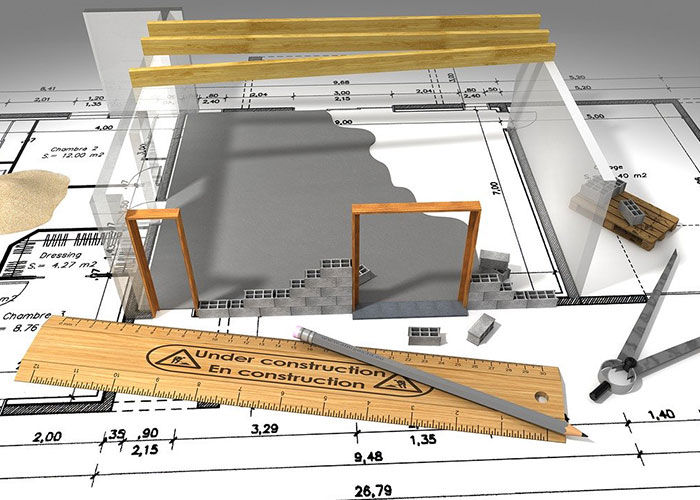Since 1978, anyone having construction work carried out must, regardless of their status, take out property damage insurance. Complementary to the ten-year guarantee, which is imposed on manufacturers, it covers the owner against certain damages.
Summary
Who should take out property damage insurance?
Indeed, property damage insurance is not optional. It was made compulsory by a law of January 1978. In the event of non-compliance with this provision, financial penalties and prison sentences are also provided for. In general, this work damage insurance concerns the owners of real estate.
But the law specifies that it must also be subscribed by a legal or natural person acting on behalf of the owner of the property, as seller or agent.
This means that promoters, builders of single-family homes or syndicates of co-ownership must also take out this insurance. In the broad sense, it is therefore the project owners who are concerned by this property damage insurance.
What is property damage insurance?
If you are the owner, the property damage insurance covers you for 10 years in the event of poor workmanship compromising the solidity of the construction or making it unsuitable for its intended purpose.
The lack of solidity can be revealed by several types of defects. It may be, for example, the appearance of cracks in the walls, a lack of waterproofing of the roof or even the non-compliance of the electrical installation.
As for the criterion of impropriety for a work, it is assessed differently. Among the elements that can put it into play, we can note the non-compliance with fire safety rules or town planning rules or even serious insulation defects.
It should also be noted that the damage covered by the insurance may result from a defect in the floor. In this case, the insurance applies even if this defect was not visible when the work began. Builders must indeed, before starting them, carry out an in-depth study of the ground.
On the other hand, certain damages are not covered by this insurance; these include damage to doors or windows, damage resulting from normal wear and tear or covered by other insurance.
If certain defects are therefore observed, you can turn to the builder who, for his part, must take out ten-year liability insurance. This insurance involves a ten-year guarantee, the scope of which is the same as that of property damage insurance.
These two types of insurance are therefore complementaryproperty damage insurance protecting project owners, ten-year liability insurance covering builders.
Property damage insurance completes the protection of the client. Indeed, it comes in addition to two other guarantees. The first is the guarantee of perfect completion which, for one year, protects you if defects appear. The manufacturer is indeed required to repair them.
The second is the two-year warranty, which allows the replacement of certain equipment for two years.
Why is property damage insurance compulsory?
If this insurance has been made compulsory, it is because it protects the insured much better in the event of a claim. Indeed, the insurer will have to compensate it within a short period of time, without having to establish liability for the loss. He has in fact three months to reimburse the aggrieved contracting authority.
The insurer must appoint an expert, at its own expense, to verify the nature of the damage and ensure that it falls within the scope of the faulty workmanship covered by the property damage insurance and ten-year liability. Furthermore, the insurer will indemnify the contracting authority without applying any deductible.
If the reaction of the insurer is so fast, it is primarily because the law requires it. But it is also because he can turn to the builder’s insurer, who, as we have said, is required to take out ten-year liability insurance.
The compensation granted must make it possible to provide, in an efficient manner, for all the repair work. But they must also finance any demolition and clearing work.
Before the passage of this law, owners who were victims of poor workmanship sometimes had to wait years before receiving any compensation. It took a lot of time for the insurers to find the responsibilities in the occurrence of the disaster.
While waiting for this compensation, the injured owners had to face significant legal costs. And they also had to continue to pay the monthly installments of their loan, if they had taken out one.
To add to their worries, they still had to find temporary accommodation. Because, pending possible repairs, their house, whose solidity was compromised, was in an uninhabitable state.
Building damage insurance is therefore real progress for the client, who is now truly protected against the consequences of construction defects. This is the reason why this insurance has been made compulsory.




